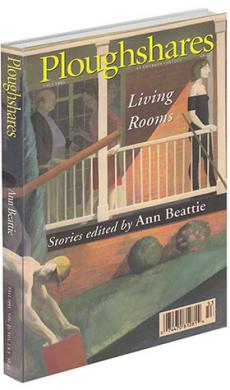rev. of Stygo by Laura Hendrie
Stygo
A novel by Laura Hendrie. MacMurray & Beck, $16.95 cloth. Reviewed by Jessica Dineen.
Although Laura Hendrie’s first novel,
Stygo, focuses on the tiny beet growers’ town of Stygo, Colorado, it is in no way limited by its narrow geographic boundaries. To the contrary, Hendrie’s brilliantly precise writing offers an organic view of her characters’ peculiar isolation, so that their predicaments seem as rich as
the soil.
Hendrie’s Stygo is sugar beet and cornfields, the Red Spot refinery, the Rockeroy bar, a gas station, and the Funtown fairground. Each chapter of the novel features a different group of characters, and the town’s facts and incidents become historied as the chapters accumulate. The people in Stygo feel trapped in the narrow particulars of their lives, but are also rebelliously settled; they look hard at their surroundings not for a way to leave, but for a way out of
wanting to leave. Tom-Go, the young manager of the Rockeroy, has bragged all his life about getting out of Stygo, but when he wins enough lottery money for a ticket to Alaska, he dawdles on the day of his departure, mopping the Rockeroy barroom floor one last time, hoping someone will ask him to stay.
Two girls who live in the shadow of their brother, a murderer on death row, work locked in a glass ticket booth at Funtown. Frightened by pranksters, they keep the lights off in the booth, but then devise a game to taunt their customers mercilessly, an attempt to make the world outside — not their own lives — the real place of ridicule and danger.
Reba is another of Hendrie’s characters who finds a way to transcend the small meanness of her surroundings. Living in a dusty gas station, Reba is usually found under the porch, hiding from her hard-edged father, taking refuge in her love for a pet armadillo, Jubilee. Sent away for a time after her mother abandons the family, Reba returns to find that Jubilee has been run over. Her father has Jubilee stuffed, with a pink plastic tongue, marbles for eyes, and its feet nailed to a board. Reba’s fear of the stuffed armadillo is palpable. But, eventually, she forges a fondness for the “new” Jubilee, because it’s what she has left.
Another girl, Ruth, searches the “dark green wall of corn around the house” for her mother, who exhibits early signs of Alzheimer’s and has wandered away from a cookout. Ruth stumbles blindly in the rows, seeing “nothing but heat ghosts rising from the fields,” then is sent by her father to the top of the silo. There, we expect perspective, relief. But Ruth sees only her father, “his shadow a black crowbar following his feet. Over in the side yard, the coals from the barbecue look like a little piece of sunset fell out of the sky. For every direction the corn is still.” Later, after her mother is found, Ruth tries to think of worse things that could happen than her mother’s fading. She thinks of her own death, and her feeling of isolation is apocalyptic; she imagines their house “at the end of time, with everyone gone and all the windows and doors blown out and the corn growing wild . . . and reaching inside.”
The last pages of
Stygo are a cold-hearted inventory from the Red Spot Employee Availability Statistics, including “employability by present company standards.” The list reinforces the feeling that these stories are unearthings, each gritty fact revealed myopically, hard evidence, showing a Stygo made up of separate, lonely people who are also integrally tied together by wisdom about the circumstances they share. Laura Hendrie’s genius is that
Stygo describes this bleak town and its inhabitants with astoundingly beautiful clarity.

